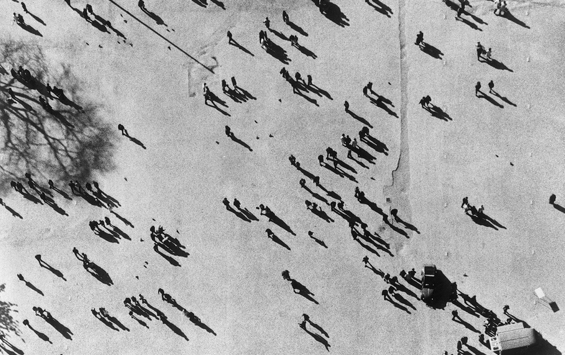What happens to a body of artistic work when its presiding genius dies? It’s hard to imagine anyone finds it hard to hold in mind the cumulative effect of the works of J G Ballard, say, or even Dame Barbara Cartland. Mythomanes are, above all else, consistent.
But it’s consistency that matters – not personality. While he lived, the writer-artist-filmmaker Derek Jarman practically personified British metropolitan intellectual life. But it was his living personality that held his wildly varied (and variable) world together. Within a couple of months of his death, those of us who’d rated him were beginning to avoid making eye contact: day by day, the pleasures we had shared were ceasing to make any sense.
Time will heal Jarman’s reputation, but very slowly – and I think the work of Chris Marker – the videos, the writings, the photographs, the documentaries, the films, the CD-ROMs, the installations and all the rest of it – is likely to require as long a recuperation.
The Whitechapel Gallery in the East End of London has put together a tremendous retrospective of the life and work of the French artist and documentary maker, who died in 2012. But the experience, as you move dumbfounded from screen to glass case to screen to keyboard, is neither one of pleasure, nor even admiration. In fact it’s cumulatively disturbing.
How can none of this mean anything any more? Is it the gallery, or is it you? (It’s you.) Even Marker’s filmed photo roman La Jetee (the easy one, the entry text, the one that got turned into Twelve Monkeys) slithers over your eyes as slick and as cold as an eel. Are you having some sort of stroke?
http://vimeo.com/42460300
Alain Resnais called Marker “the prototype of the twenty-first-century man” and he wasn’t kidding. Marker was Mr Media Saturation, the living incarnation of Guy Debord’s Society of the Spectacle. His video mash-ups didn’t just capture the future. They somehow made it inevitable.
And that, of course, is the trouble. We are living in Marker’s world now, just as surely as we are living in Jarman’s. It’s damned hard to map a forest when you’ve been dropped slap-bang in the middle of it.
Feel your way, purblind, from one wall-mounted explanatory text to another. Most are in Marker’s own words. He understands your pain. He even gives it a name: “the megalomanic melancholy in the browsing of past images.”
For now, at least, Marker, the unwitting and posthumous author of his own explanatory texts, lives more fully and more vividly than his work, his subjects, his photographs of 1968, and students demonstrating against “a largely imaginary fascism”.
“In another time I guess I would have been content with filming girls and cats,” he writes. “But you don’t choose your time.”

